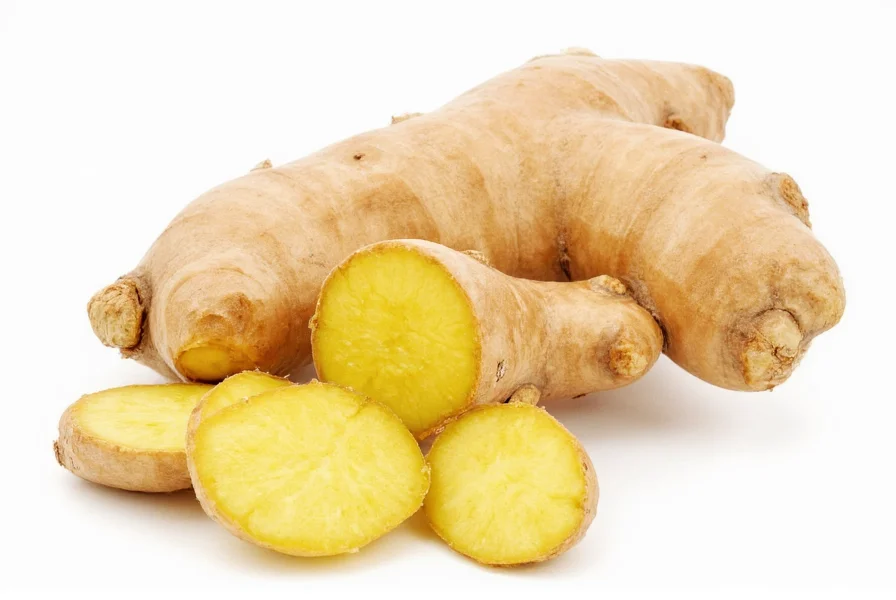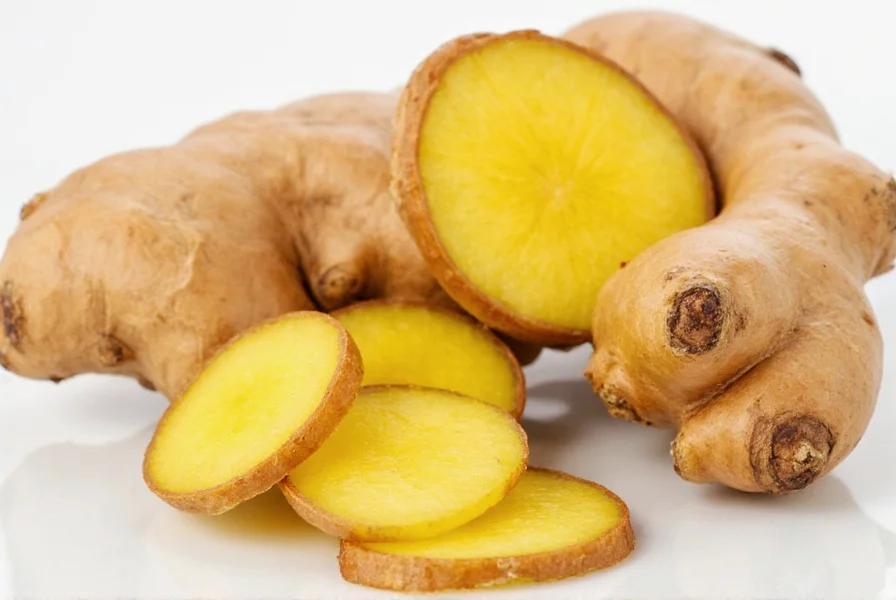
Understanding Ginger's Science-Backed Health Benefits
Ginger (Zingiber officinale) has been used for centuries in traditional medicine systems across Asia and the Middle East. Modern research now confirms many of these traditional uses, revealing ginger's impressive therapeutic potential. This versatile root contains over 400 different compounds, with gingerols and shogaols being the most biologically active components responsible for its medicinal properties.
Top 5 Evidence-Based Ginger Benefits
Nausea and Vomiting Relief
Ginger's effectiveness against nausea is one of its most well-documented benefits. Multiple clinical trials demonstrate ginger's ability to reduce various types of nausea including:
- Morning sickness during pregnancy (studies show 1g daily significantly reduces symptoms)
- Postoperative nausea (comparable to conventional anti-nausea medications)
- Chemotherapy-induced nausea
- Motion sickness
A comprehensive 2020 review published in Nutrients analyzed 12 clinical trials involving over 1,200 participants and concluded that ginger supplementation significantly reduced nausea severity compared to placebo.
Anti-Inflammatory Properties for Pain Management
Ginger's potent anti-inflammatory effects make it valuable for managing chronic pain conditions. Research shows ginger can:
- Reduce osteoarthritis pain by 30-50% in some studies
- Decrease muscle soreness after exercise
- Alleviate menstrual pain (dysmenorrhea) as effectively as ibuprofen in some trials
The mechanism involves gingerols inhibiting inflammatory pathways similar to non-steroidal anti-inflammatory drugs (NSAIDs), but without the same gastrointestinal side effects. A study in the Journal of Medicinal Food found that 2g of ginger daily reduced markers of inflammation by 29% after 8 weeks.
| Health Benefit | Effective Dosage | Timeframe for Results | Research Support Level |
|---|---|---|---|
| Nausea relief | 1-1.5g daily | Within hours | ★★★★★ (Strong) |
| Osteoarthritis pain | 0.5-2g daily | 2-4 weeks | ★★★★☆ (Good) |
| Digestive support | 0.5-1g before meals | Within 30 minutes | ★★★☆☆ (Moderate) |
| Immune support | Regular consumption | Long-term | ★★★☆☆ (Moderate) |
Digestive Health Enhancement
Ginger benefits for digestion include accelerating gastric emptying, reducing bloating, and relieving indigestion. Research published in European Journal of Gastroenterology & Hepatology found that ginger reduced the time food spent in the stomach by 25%, which can be particularly beneficial for people with functional dyspepsia. The compound gingerol stimulates digestive enzymes and relaxes the intestinal tract, making it an effective natural remedy for occasional digestive discomfort.
Immune System Support
Ginger's antioxidant and antimicrobial properties contribute to immune health. Studies show ginger can:
- Inhibit the growth of certain bacteria and viruses
- Boost antioxidant enzyme activity in the body
- Reduce oxidative stress markers by up to 28% with regular consumption
While not a cure for colds or flu, ginger tea benefits for colds include soothing sore throats, reducing inflammation in respiratory passages, and providing hydration during illness.
Potential Blood Sugar Regulation
Emerging research suggests ginger may help regulate blood sugar levels. A 2015 study in Complementary Therapies in Medicine found that 2g of ginger powder daily reduced fasting blood sugar by 12% and improved HbA1c levels in diabetic patients over 12 weeks. While more research is needed, these findings indicate ginger's potential role in metabolic health.
How to Incorporate Ginger Into Your Diet
Maximizing ginger root anti-inflammatory properties requires proper preparation and consumption:
- Fresh ginger: Peel and slice or grate into teas, smoothies, or stir-fries (1-2 inches daily)
- Ginger tea: Steep 1-2 teaspoons of grated ginger in hot water for 10 minutes
- Cooking: Add to soups, curries, and salad dressings for flavor and benefits
- Supplements: Choose standardized extracts containing 5% gingerols (follow label instructions)

Safety Considerations and Potential Side Effects
Ginger is generally safe for most people when consumed in food amounts or up to 4g daily as a supplement. However, some individuals should exercise caution:
- People taking blood thinners (ginger may increase bleeding risk)
- Those with gallstones (ginger may increase bile production)
- Pregnant women beyond the first trimester should consult a healthcare provider
Mild side effects of consuming ginger may include heartburn, mouth irritation, or diarrhea, especially at higher doses. How much ginger should I consume daily? Most research shows optimal benefits at 1-2g daily, with diminishing returns and increased side effects above 4g.
Limitations of Current Research
While ginger shows promise for multiple health conditions, research has some limitations:
- Many studies use small sample sizes
- Optimal dosing isn't standardized across conditions
- Long-term effects beyond 3 months aren't well studied
- Ginger supplements vs fresh ginger may have different efficacy
Ginger should be viewed as a complementary approach rather than a replacement for conventional medical treatment, especially for serious health conditions.
Conclusion
Ginger's scientifically supported health benefits make it a valuable addition to a healthy lifestyle. From nausea relief to inflammation reduction, this ancient remedy has earned its place in modern wellness practices. By incorporating 1-2 grams of ginger daily through tea, cooking, or supplements, most people can safely experience its therapeutic effects. As with any natural remedy, consistency is key—regular consumption yields better results than occasional use. Always consult with a healthcare provider before using ginger therapeutically if you have underlying health conditions or take medications.
Frequently Asked Questions
What is the most effective way to consume ginger for nausea relief?
For nausea relief, consuming 1-1.5 grams of fresh ginger (about 1-inch piece) or 250-500mg of ginger powder 30 minutes before potential nausea triggers is most effective. Ginger tea benefits for nausea are well-documented, with studies showing symptom reduction within 20-30 minutes of consumption. Chewing crystallized ginger or taking ginger capsules also works, but fresh ginger tends to provide faster relief due to more immediate absorption of active compounds.
How long does it take to experience ginger's anti-inflammatory benefits?
For chronic inflammation conditions like osteoarthritis, research shows it typically takes 2-4 weeks of consistent daily consumption (1-2 grams) to notice significant pain reduction. Some people report reduced muscle soreness within hours after exercise when taking ginger beforehand. The anti-inflammatory effects build cumulatively, so regular daily intake yields better results than occasional use. Maximum benefits are usually observed after 8-12 weeks of consistent use.
Can ginger interact with medications?
Yes, ginger may interact with certain medications, particularly blood thinners like warfarin, as it can increase bleeding risk. It may also enhance the effects of diabetes medications, potentially causing blood sugar to drop too low. Those taking high blood pressure medications should monitor their levels, as ginger may have mild hypotensive effects. Always consult your healthcare provider before using ginger therapeutically if you take prescription medications, especially if consuming more than culinary amounts (over 1g daily).
Is fresh ginger more effective than powdered ginger?
Both forms offer benefits, but fresh ginger generally contains higher levels of gingerols, the primary active compounds. However, dried ginger powder has higher concentrations of shogaols, which form when gingerols are dehydrated and may have stronger anti-inflammatory effects. Research shows both forms are effective, with fresh ginger being better for immediate nausea relief and powdered ginger potentially offering stronger anti-inflammatory benefits. For most health purposes, either form works well when consumed in appropriate amounts (1-2g daily).
What are the potential side effects of consuming too much ginger?
Consuming more than 4 grams of ginger daily may cause mild side effects including heartburn, diarrhea, mouth irritation, and stomach discomfort. In rare cases, excessive ginger consumption has been associated with increased bleeding risk, especially in those with bleeding disorders or taking blood thinners. Some people experience a temporary drop in blood pressure. Most side effects resolve when ginger consumption is reduced. The recommended maximum daily intake is 4 grams, with most research showing optimal benefits at 1-2 grams daily for therapeutic effects.











 浙公网安备
33010002000092号
浙公网安备
33010002000092号 浙B2-20120091-4
浙B2-20120091-4